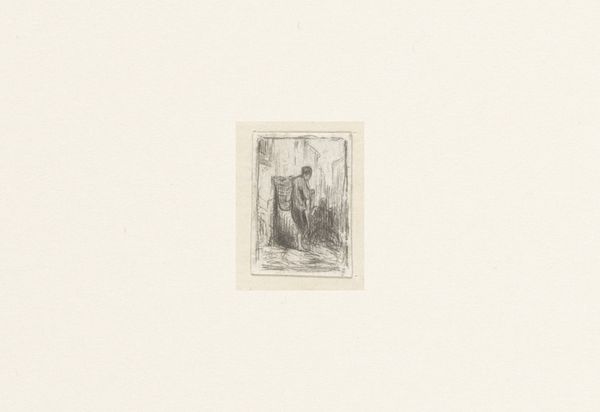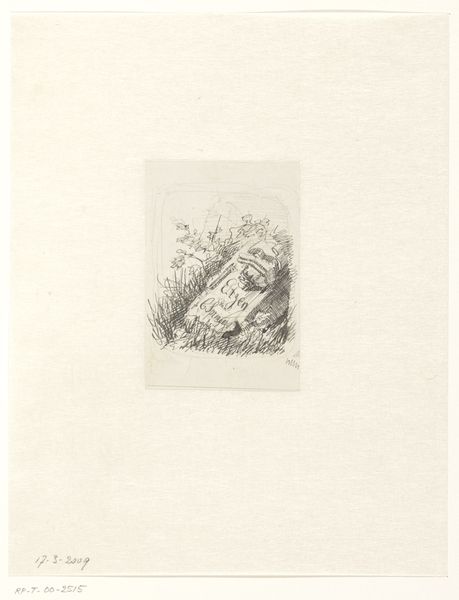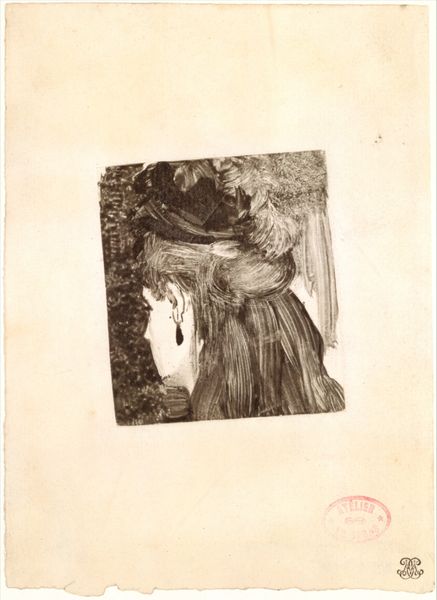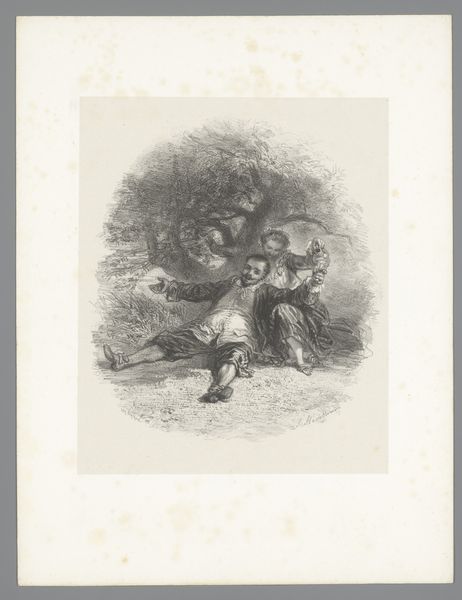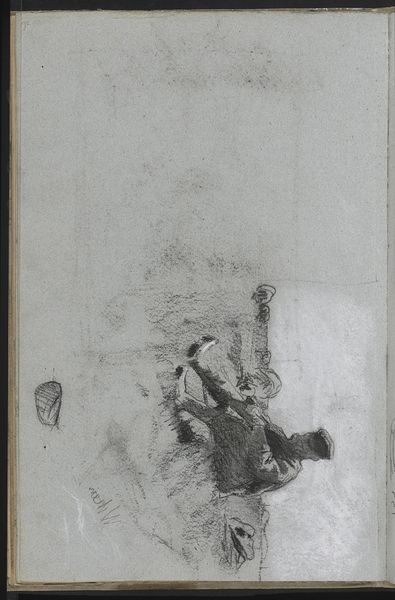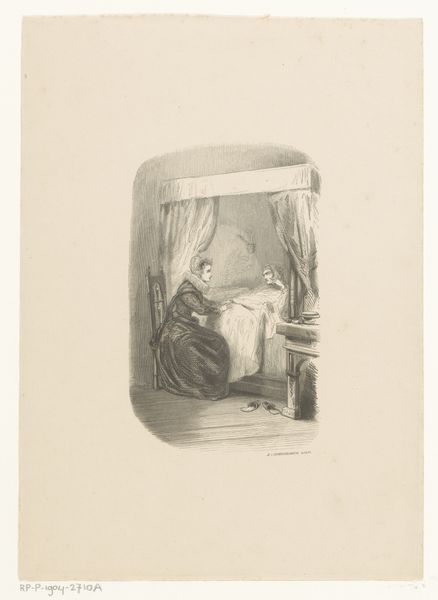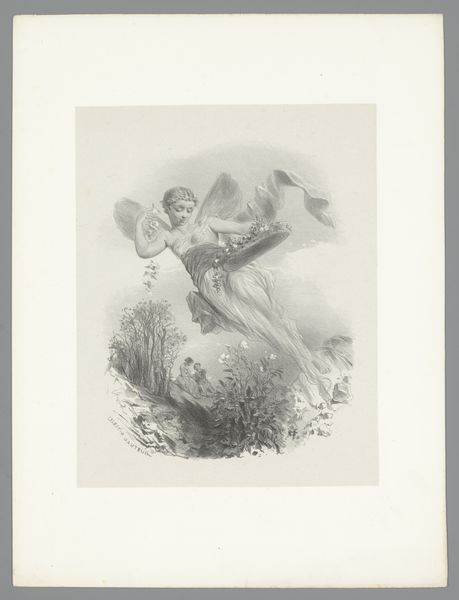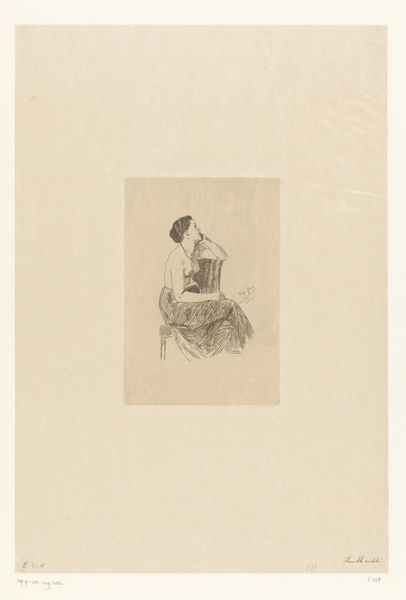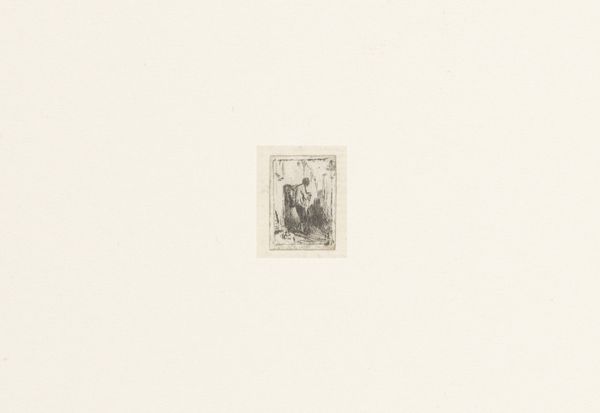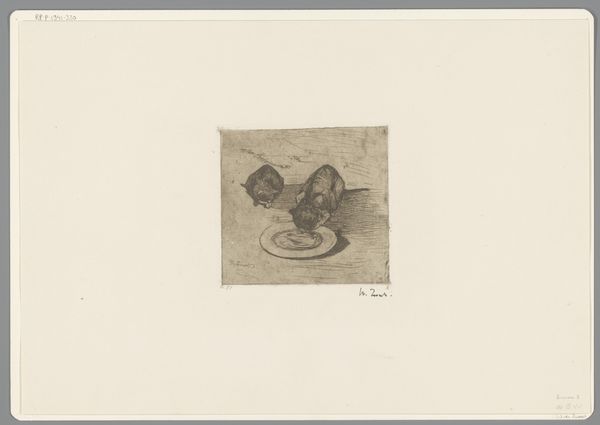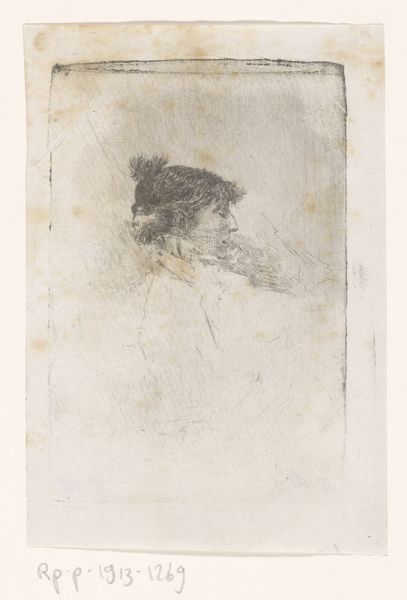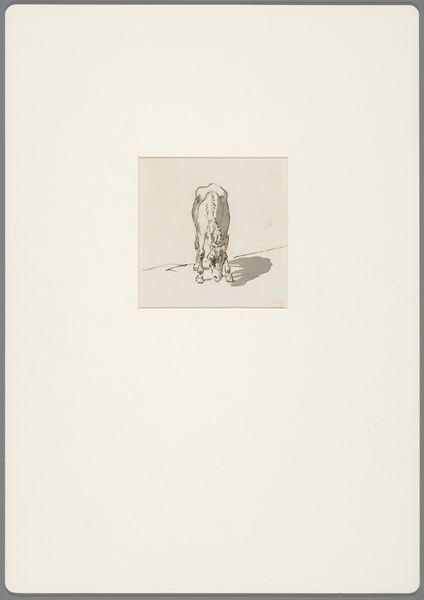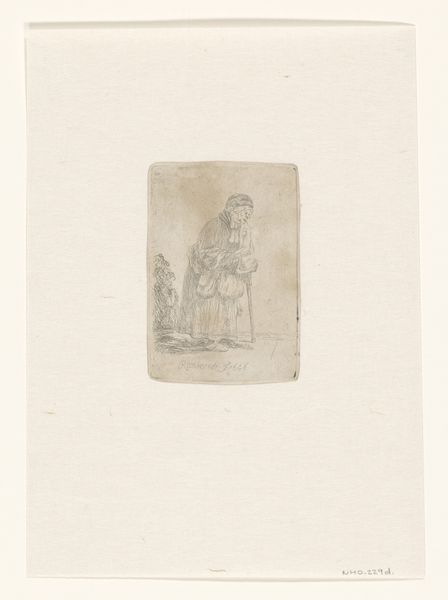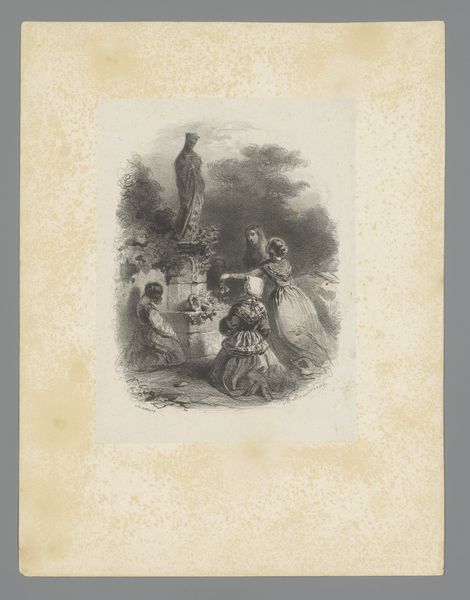
drawing, print
#
drawing
# print
#
figuration
#
genre-painting
Dimensions: height 88 mm, width 63 mm
Copyright: Rijks Museum: Open Domain
Curator: This is “Painting Pottery,” a print by Adam Clark Vroman, created around 1900. The subject matter really underscores Vroman's interest in depicting indigenous labor and craft. Editor: It has such a grainy, almost dreamlike quality, even though the scene itself feels so grounded. The muted palette emphasizes the repetitive labor and utilitarian environment, while the compression of the image itself mimics the claustrophobia. Curator: Absolutely. The artistic approach gives it this documentary feel, but there are significant issues concerning representation. Vroman was not an unproblematic figure; he photographed native people extensively, sometimes with a colonial gaze, even while attempting to preserve aspects of their culture. How can we address this ethically? Editor: Perhaps by focusing on the material act, the making. Look at the depiction of hands, each performing a specific part of the process—carrying, turning, painting. The pottery becomes the physical manifestation of community and collaboration. Curator: But aren't we romanticizing it by isolating it? The image is framed with the "nine of diamonds". How might that shape its original meaning and how can we reclaim this representation, placing it within a larger context of exploitation and dispossession? Editor: Good point, yet the act of creating something tangible – the transition from raw clay to decorated vessel – speaks to human resilience in the face of these oppressions. It reminds us of pre-industrial economies, celebrating labor and creativity and revealing hidden, perhaps suppressed, acts of resistance. Curator: That makes me think about the historical erasure inherent in framing Indigenous people and their crafts as if frozen in time. We need to consider the gaze that romanticizes traditional craft while simultaneously denying them economic agency and access to markets for that labor. Editor: Precisely, acknowledging the value, process and cultural contribution is the first step to righting this imbalance and celebrating the creation against a background of economic realities. The physical artwork stands as an embodiment of these histories. Curator: This piece makes me reflect on the vital, but difficult, role of institutions in responsibly representing works produced by colonial subjects while also engaging the colonial gaze that formed their vision. Editor: Agreed. Analyzing this artwork and its setting really highlights the need to understand history while still valuing craft and appreciating humanity and all forms of labor.
Comments
No comments
Be the first to comment and join the conversation on the ultimate creative platform.
